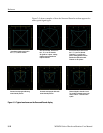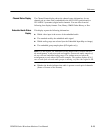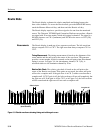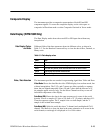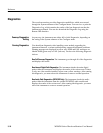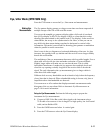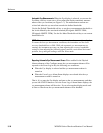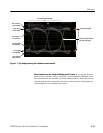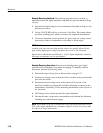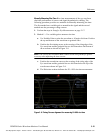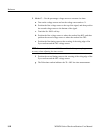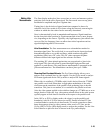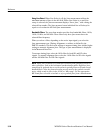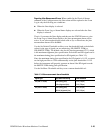
Reference
3-20
WFM700 Series Waveform Monitors User Manual
Manually Measuring Amplitude. The following procedure shows you how to
manually measure the signal amplitude using both the graticule and the Voltage
Cursors.
1. Perform the initial settings for Eye measurements described in Setup for Eye
Measurements above.
2. Use the CLOCK BW soft key to select the 1 kHz filter. This setting reduces
the effects of timing jitter, which can obscure the amplitude measurement.
3. To measure amplitude, use the graticule (1x gain) or use the voltage cursors.
Ignore any overshoot or undershoot on the rising or falling edges.
NOTE. For Cursor measurements, you can use any gain setting, including
variable gain, since the waveform and the cursors are equally affected by the
gain setting. Higher gain settings help match the cursor to the waveform.
Signal sources should measure 800 mV
p-p
ᐔ10%. Signal amplitudes outside of
this range can degrade receiver performance.
Manually Measuring Aberrations. Serial sources should produce good signal
transitions with a minimum of overshoot and ringing. To manually measure
aberrations, perform the following steps:
1. Perform the steps in Setup for Eye Measurements on page 3--17.
2. Position one voltage cursor at the peak of the overshoot at the top horizontal
part of the waveform.
3. Position the second voltage cursor at the bottom of the top line of the
waveform. Include any ringing (the oscillation following overshoot) in the
measurement. Essentially, you are measuring the thickness of the top line of
the waveform.
4. The Voltage Cursor readout provides the signal amplitude.
5. Perform the same voltage-cursor measurement on the bottom line thickness,
including any undershoot and ringing.
NOTE. Aberrations at the top or bottom line of the waveform should not exceed
10% of the signal amplitude since automatic equalizer circuits in recei vers may
be sensitive to larger aberrations.



